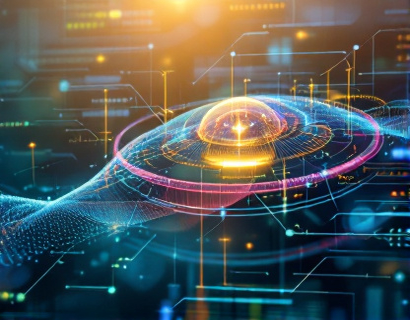Elevating Digital Experiences: The Synergy of AI and Crypto
The intersection of artificial intelligence and cryptocurrency is giving rise to a new era of digital experiences, where seamless integration and advanced solutions are redefining how we interact with technology. This fusion is not just about combining two powerful technologies but about creating a synergy that enhances user engagement, security, and efficiency across various digital platforms. For tech enthusiasts and innovators, understanding this synergy is crucial for navigating the future of connected solutions.
Understanding AI and Crypto
Artificial intelligence, or AI, refers to the simulation of human intelligence processes by machines, particularly computer systems. These processes include learning, reasoning, and self-correction. AI technologies such as machine learning, natural language processing, and computer vision are transforming industries by automating tasks, providing insights from complex data, and creating more intuitive user interfaces.
Cryptocurrency, on the other hand, is a digital or virtual currency that uses cryptography for security. It operates on a decentralized network, typically a blockchain, which ensures transparency and immutability. Cryptocurrencies like Bitcoin, Ethereum, and numerous altcoins have gained significant traction, not just as digital currencies but as a medium for decentralized applications and smart contracts.
Seamless Integration of AI and Crypto
The integration of AI and cryptocurrency is creating a new paradigm in digital interactions. One of the most significant benefits is the enhancement of security. AI algorithms can detect and prevent fraudulent activities by analyzing patterns and anomalies in transaction data. This real-time monitoring and response capability significantly reduce the risk of cyber attacks and enhance user trust in crypto platforms.
Moreover, AI-driven user interfaces are making crypto applications more accessible. Natural language processing allows users to interact with crypto services using voice commands or natural language queries, reducing the learning curve and making the technology more user-friendly. For instance, AI-powered chatbots can assist users in navigating complex crypto environments, providing personalized advice and support.
Advanced Solutions in Crypto Trading
In the realm of crypto trading, AI is revolutionizing the way traders make decisions. Machine learning models can analyze vast amounts of market data, identifying trends and predicting price movements with a level of accuracy that surpasses traditional methods. These predictive models help traders execute trades at optimal times, maximizing profits and minimizing risks.
Automated trading bots powered by AI can execute trades 24/7 without human intervention, following predefined strategies or adapting to real-time market conditions. This not only increases efficiency but also allows traders to focus on higher-level decision-making and strategy development. The integration of AI in crypto trading platforms is making the market more democratic, accessible to a broader range of participants.
Enhancing Decentralized Applications
Decentralized applications (dApps) are at the forefront of the crypto revolution, offering decentralized alternatives to traditional centralized services. AI enhances the functionality and user experience of dApps in several ways. For example, AI can optimize smart contracts, ensuring they execute efficiently and securely. By analyzing historical data and current conditions, AI can suggest improvements to contract logic, reducing the risk of vulnerabilities and bugs.
AI-driven analytics can also provide insights into user behavior within dApps, helping developers refine and enhance the user experience. Personalized recommendations and tailored interfaces can keep users engaged and increase the adoption of dApps. This level of customization is particularly valuable in areas like decentralized finance (DeFi), where user experience directly impacts the success of financial products.
Improving Blockchain Scalability
One of the major challenges facing blockchain technology is scalability. As the number of transactions increases, blockchains can become congested, leading to slower transaction times and higher fees. AI is playing a crucial role in addressing this issue by optimizing blockchain operations. Machine learning algorithms can predict network congestion and dynamically adjust parameters to maintain optimal performance.
Additionally, AI can enhance the development of layer 2 solutions, such as state channels and sidechains, which offload transactions from the main blockchain, improving scalability and reducing costs. By analyzing network data and user patterns, AI can help design more efficient and scalable blockchain architectures, paving the way for widespread adoption of crypto technologies.
Enhancing User Authentication and Identity Management
Security and privacy are paramount in the crypto space, and AI is providing robust solutions for user authentication and identity management. Biometric authentication, powered by AI, offers a secure and convenient way to verify user identities. Face recognition, fingerprint scanning, and voice recognition are becoming standard features in crypto applications, reducing the reliance on traditional passwords and enhancing security.
AI-driven identity management systems can also help in compliance with regulatory requirements by accurately verifying user identities and monitoring for suspicious activities. This not only protects users but also helps crypto platforms adhere to know-your-customer (KYC) and anti-money laundering (AML) regulations, fostering a more trustworthy ecosystem.
Future Prospects and Challenges
The future of AI and crypto integration holds immense potential, but it also comes with challenges. One of the primary concerns is the regulatory landscape. As AI and crypto technologies evolve, regulators are grappling with how to oversee these innovations while protecting consumers. Striking the right balance between innovation and regulation will be crucial for the sustainable growth of this sector.
Another challenge is the technical complexity involved in integrating AI with blockchain technologies. Ensuring interoperability and maintaining the decentralized nature of blockchain while leveraging AI's computational power requires innovative solutions and collaboration between experts in both fields. However, the ongoing research and development in this area are paving the way for more seamless and effective integrations.
Moreover, the ethical implications of AI in crypto cannot be overlooked. Ensuring transparency, fairness, and accountability in AI-driven decisions is essential to build trust and adoption. The crypto community must prioritize ethical AI practices, avoiding biases and ensuring that AI benefits all users equitably.
Conclusion
The fusion of AI and cryptocurrency is transforming the digital landscape, offering advanced solutions that enhance security, user experience, and efficiency. For tech enthusiasts and innovators, understanding this synergy is key to navigating the future of connected solutions. As the technologies continue to evolve, the possibilities for innovation are endless, promising a more secure, efficient, and user-friendly digital world.











































